Oncology
Cardiovascular
Diabetes
Neurology
Generic
Branded
Novel
Oral
Injectable
Topical
Inhalation
Pharmaceutical Industry
Research Institutions
Contract Manufacturing Organizations
North America
Europe
South America
Asia Pacific
Middle East and Africa
North America Outlook (USD Billion, 2019-2035)
North America Small Molecule API Market by Application Type
Oncology
Cardiovascular
Diabetes
Neurology
North America Small Molecule API Market by Type
Generic
Branded
Novel
North America Small Molecule API Market by Formulation Type
Oral
Injectable
Topical
Inhalation
North America Small Molecule API Market by End Use Type
Pharmaceutical Industry
Research Institutions
Contract Manufacturing Organizations
North America Small Molecule API Market by Regional Type
US
Canada
US Outlook (USD Billion, 2019-2035)
US Small Molecule API Market by Application Type
Oncology
Cardiovascular
Diabetes
Neurology
US Small Molecule API Market by Type
Generic
Branded
Novel
US Small Molecule API Market by Formulation Type
Oral
Injectable
Topical
Inhalation
US Small Molecule API Market by End Use Type
Pharmaceutical Industry
Research Institutions
Contract Manufacturing Organizations
CANADA Outlook (USD Billion, 2019-2035)
CANADA Small Molecule API Market by Application Type
Oncology
Cardiovascular
Diabetes
Neurology
CANADA Small Molecule API Market by Type
Generic
Branded
Novel
CANADA Small Molecule API Market by Formulation Type
Oral
Injectable
Topical
Inhalation
CANADA Small Molecule API Market by End Use Type
Pharmaceutical Industry
Research Institutions
Contract Manufacturing Organizations
Europe Outlook (USD Billion, 2019-2035)
Europe Small Molecule API Market by Application Type
Oncology
Cardiovascular
Diabetes
Neurology
Europe Small Molecule API Market by Type
Generic
Branded
Novel
Europe Small Molecule API Market by Formulation Type
Oral
Injectable
Topical
Inhalation
Europe Small Molecule API Market by End Use Type
Pharmaceutical Industry
Research Institutions
Contract Manufacturing Organizations
Europe Small Molecule API Market by Regional Type
Germany
UK
France
Russia
Italy
Spain
Rest of Europe
GERMANY Outlook (USD Billion, 2019-2035)
GERMANY Small Molecule API Market by Application Type
Oncology
Cardiovascular
Diabetes
Neurology
GERMANY Small Molecule API Market by Type
Generic
Branded
Novel
GERMANY Small Molecule API Market by Formulation Type
Oral
Injectable
Topical
Inhalation
GERMANY Small Molecule API Market by End Use Type
Pharmaceutical Industry
Research Institutions
Contract Manufacturing Organizations
UK Outlook (USD Billion, 2019-2035)
UK Small Molecule API Market by Application Type
Oncology
Cardiovascular
Diabetes
Neurology
UK Small Molecule API Market by Type
Generic
Branded
Novel
UK Small Molecule API Market by Formulation Type
Oral
Injectable
Topical
Inhalation
UK Small Molecule API Market by End Use Type
Pharmaceutical Industry
Research Institutions
Contract Manufacturing Organizations
FRANCE Outlook (USD Billion, 2019-2035)
FRANCE Small Molecule API Market by Application Type
Oncology
Cardiovascular
Diabetes
Neurology
FRANCE Small Molecule API Market by Type
Generic
Branded
Novel
FRANCE Small Molecule API Market by Formulation Type
Oral
Injectable
Topical
Inhalation
FRANCE Small Molecule API Market by End Use Type
Pharmaceutical Industry
Research Institutions
Contract Manufacturing Organizations
RUSSIA Outlook (USD Billion, 2019-2035)
RUSSIA Small Molecule API Market by Application Type
Oncology
Cardiovascular
Diabetes
Neurology
RUSSIA Small Molecule API Market by Type
Generic
Branded
Novel
RUSSIA Small Molecule API Market by Formulation Type
Oral
Injectable
Topical
Inhalation
RUSSIA Small Molecule API Market by End Use Type
Pharmaceutical Industry
Research Institutions
Contract Manufacturing Organizations
ITALY Outlook (USD Billion, 2019-2035)
ITALY Small Molecule API Market by Application Type
Oncology
Cardiovascular
Diabetes
Neurology
ITALY Small Molecule API Market by Type
Generic
Branded
Novel
ITALY Small Molecule API Market by Formulation Type
Oral
Injectable
Topical
Inhalation
ITALY Small Molecule API Market by End Use Type
Pharmaceutical Industry
Research Institutions
Contract Manufacturing Organizations
SPAIN Outlook (USD Billion, 2019-2035)
SPAIN Small Molecule API Market by Application Type
Oncology
Cardiovascular
Diabetes
Neurology
SPAIN Small Molecule API Market by Type
Generic
Branded
Novel
SPAIN Small Molecule API Market by Formulation Type
Oral
Injectable
Topical
Inhalation
SPAIN Small Molecule API Market by End Use Type
Pharmaceutical Industry
Research Institutions
Contract Manufacturing Organizations
REST OF EUROPE Outlook (USD Billion, 2019-2035)
REST OF EUROPE Small Molecule API Market by Application Type
Oncology
Cardiovascular
Diabetes
Neurology
REST OF EUROPE Small Molecule API Market by Type
Generic
Branded
Novel
REST OF EUROPE Small Molecule API Market by Formulation Type
Oral
Injectable
Topical
Inhalation
REST OF EUROPE Small Molecule API Market by End Use Type
Pharmaceutical Industry
Research Institutions
Contract Manufacturing Organizations
APAC Outlook (USD Billion, 2019-2035)
APAC Small Molecule API Market by Application Type
Oncology
Cardiovascular
Diabetes
Neurology
APAC Small Molecule API Market by Type
Generic
Branded
Novel
APAC Small Molecule API Market by Formulation Type
Oral
Injectable
Topical
Inhalation
APAC Small Molecule API Market by End Use Type
Pharmaceutical Industry
Research Institutions
Contract Manufacturing Organizations
APAC Small Molecule API Market by Regional Type
China
India
Japan
South Korea
Malaysia
Thailand
Indonesia
Rest of APAC
CHINA Outlook (USD Billion, 2019-2035)
CHINA Small Molecule API Market by Application Type
Oncology
Cardiovascular
Diabetes
Neurology
CHINA Small Molecule API Market by Type
Generic
Branded
Novel
CHINA Small Molecule API Market by Formulation Type
Oral
Injectable
Topical
Inhalation
CHINA Small Molecule API Market by End Use Type
Pharmaceutical Industry
Research Institutions
Contract Manufacturing Organizations
INDIA Outlook (USD Billion, 2019-2035)
INDIA Small Molecule API Market by Application Type
Oncology
Cardiovascular
Diabetes
Neurology
INDIA Small Molecule API Market by Type
Generic
Branded
Novel
INDIA Small Molecule API Market by Formulation Type
Oral
Injectable
Topical
Inhalation
INDIA Small Molecule API Market by End Use Type
Pharmaceutical Industry
Research Institutions
Contract Manufacturing Organizations
JAPAN Outlook (USD Billion, 2019-2035)
JAPAN Small Molecule API Market by Application Type
Oncology
Cardiovascular
Diabetes
Neurology
JAPAN Small Molecule API Market by Type
Generic
Branded
Novel
JAPAN Small Molecule API Market by Formulation Type
Oral
Injectable
Topical
Inhalation
JAPAN Small Molecule API Market by End Use Type
Pharmaceutical Industry
Research Institutions
Contract Manufacturing Organizations
SOUTH KOREA Outlook (USD Billion, 2019-2035)
SOUTH KOREA Small Molecule API Market by Application Type
Oncology
Cardiovascular
Diabetes
Neurology
SOUTH KOREA Small Molecule API Market by Type
Generic
Branded
Novel
SOUTH KOREA Small Molecule API Market by Formulation Type
Oral
Injectable
Topical
Inhalation
SOUTH KOREA Small Molecule API Market by End Use Type
Pharmaceutical Industry
Research Institutions
Contract Manufacturing Organizations
MALAYSIA Outlook (USD Billion, 2019-2035)
MALAYSIA Small Molecule API Market by Application Type
Oncology
Cardiovascular
Diabetes
Neurology
MALAYSIA Small Molecule API Market by Type
Generic
Branded
Novel
MALAYSIA Small Molecule API Market by Formulation Type
Oral
Injectable
Topical
Inhalation
MALAYSIA Small Molecule API Market by End Use Type
Pharmaceutical Industry
Research Institutions
Contract Manufacturing Organizations
THAILAND Outlook (USD Billion, 2019-2035)
THAILAND Small Molecule API Market by Application Type
Oncology
Cardiovascular
Diabetes
Neurology
THAILAND Small Molecule API Market by Type
Generic
Branded
Novel
THAILAND Small Molecule API Market by Formulation Type
Oral
Injectable
Topical
Inhalation
THAILAND Small Molecule API Market by End Use Type
Pharmaceutical Industry
Research Institutions
Contract Manufacturing Organizations
INDONESIA Outlook (USD Billion, 2019-2035)
INDONESIA Small Molecule API Market by Application Type
Oncology
Cardiovascular
Diabetes
Neurology
INDONESIA Small Molecule API Market by Type
Generic
Branded
Novel
INDONESIA Small Molecule API Market by Formulation Type
Oral
Injectable
Topical
Inhalation
INDONESIA Small Molecule API Market by End Use Type
Pharmaceutical Industry
Research Institutions
Contract Manufacturing Organizations
REST OF APAC Outlook (USD Billion, 2019-2035)
REST OF APAC Small Molecule API Market by Application Type
Oncology
Cardiovascular
Diabetes
Neurology
REST OF APAC Small Molecule API Market by Type
Generic
Branded
Novel
REST OF APAC Small Molecule API Market by Formulation Type
Oral
Injectable
Topical
Inhalation
REST OF APAC Small Molecule API Market by End Use Type
Pharmaceutical Industry
Research Institutions
Contract Manufacturing Organizations
South America Outlook (USD Billion, 2019-2035)
South America Small Molecule API Market by Application Type
Oncology
Cardiovascular
Diabetes
Neurology
South America Small Molecule API Market by Type
Generic
Branded
Novel
South America Small Molecule API Market by Formulation Type
Oral
Injectable
Topical
Inhalation
South America Small Molecule API Market by End Use Type
Pharmaceutical Industry
Research Institutions
Contract Manufacturing Organizations
South America Small Molecule API Market by Regional Type
Brazil
Mexico
Argentina
Rest of South America
BRAZIL Outlook (USD Billion, 2019-2035)
BRAZIL Small Molecule API Market by Application Type
Oncology
Cardiovascular
Diabetes
Neurology
BRAZIL Small Molecule API Market by Type
Generic
Branded
Novel
BRAZIL Small Molecule API Market by Formulation Type
Oral
Injectable
Topical
Inhalation
BRAZIL Small Molecule API Market by End Use Type
Pharmaceutical Industry
Research Institutions
Contract Manufacturing Organizations
MEXICO Outlook (USD Billion, 2019-2035)
MEXICO Small Molecule API Market by Application Type
Oncology
Cardiovascular
Diabetes
Neurology
MEXICO Small Molecule API Market by Type
Generic
Branded
Novel
MEXICO Small Molecule API Market by Formulation Type
Oral
Injectable
Topical
Inhalation
MEXICO Small Molecule API Market by End Use Type
Pharmaceutical Industry
Research Institutions
Contract Manufacturing Organizations
ARGENTINA Outlook (USD Billion, 2019-2035)
ARGENTINA Small Molecule API Market by Application Type
Oncology
Cardiovascular
Diabetes
Neurology
ARGENTINA Small Molecule API Market by Type
Generic
Branded
Novel
ARGENTINA Small Molecule API Market by Formulation Type
Oral
Injectable
Topical
Inhalation
ARGENTINA Small Molecule API Market by End Use Type
Pharmaceutical Industry
Research Institutions
Contract Manufacturing Organizations
REST OF SOUTH AMERICA Outlook (USD Billion, 2019-2035)
REST OF SOUTH AMERICA Small Molecule API Market by Application Type
Oncology
Cardiovascular
Diabetes
Neurology
REST OF SOUTH AMERICA Small Molecule API Market by Type
Generic
Branded
Novel
REST OF SOUTH AMERICA Small Molecule API Market by Formulation Type
Oral
Injectable
Topical
Inhalation
REST OF SOUTH AMERICA Small Molecule API Market by End Use Type
Pharmaceutical Industry
Research Institutions
Contract Manufacturing Organizations
MEA Outlook (USD Billion, 2019-2035)
MEA Small Molecule API Market by Application Type
Oncology
Cardiovascular
Diabetes
Neurology
MEA Small Molecule API Market by Type
Generic
Branded
Novel
MEA Small Molecule API Market by Formulation Type
Oral
Injectable
Topical
Inhalation
MEA Small Molecule API Market by End Use Type
Pharmaceutical Industry
Research Institutions
Contract Manufacturing Organizations
MEA Small Molecule API Market by Regional Type
GCC Countries
South Africa
Rest of MEA
GCC COUNTRIES Outlook (USD Billion, 2019-2035)
GCC COUNTRIES Small Molecule API Market by Application Type
Oncology
Cardiovascular
Diabetes
Neurology
GCC COUNTRIES Small Molecule API Market by Type
Generic
Branded
Novel
GCC COUNTRIES Small Molecule API Market by Formulation Type
Oral
Injectable
Topical
Inhalation
GCC COUNTRIES Small Molecule API Market by End Use Type
Pharmaceutical Industry
Research Institutions
Contract Manufacturing Organizations
SOUTH AFRICA Outlook (USD Billion, 2019-2035)
SOUTH AFRICA Small Molecule API Market by Application Type
Oncology
Cardiovascular
Diabetes
Neurology
SOUTH AFRICA Small Molecule API Market by Type
Generic
Branded
Novel
SOUTH AFRICA Small Molecule API Market by Formulation Type
Oral
Injectable
Topical
Inhalation
SOUTH AFRICA Small Molecule API Market by End Use Type
Pharmaceutical Industry
Research Institutions
Contract Manufacturing Organizations
REST OF MEA Outlook (USD Billion, 2019-2035)
REST OF MEA Small Molecule API Market by Application Type
Oncology
Cardiovascular
Diabetes
Neurology
REST OF MEA Small Molecule API Market by Type
Generic
Branded
Novel
REST OF MEA Small Molecule API Market by Formulation Type
Oral
Injectable
Topical
Inhalation
REST OF MEA Small Molecule API Market by End Use Type
Pharmaceutical Industry
Research Institutions
Contract Manufacturing Organizations

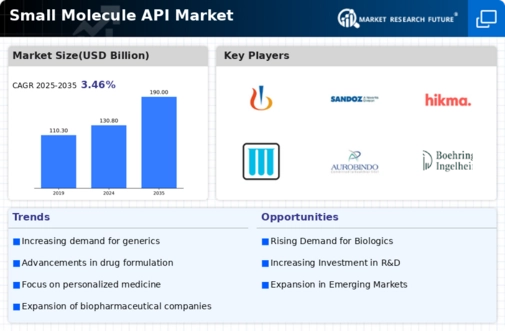
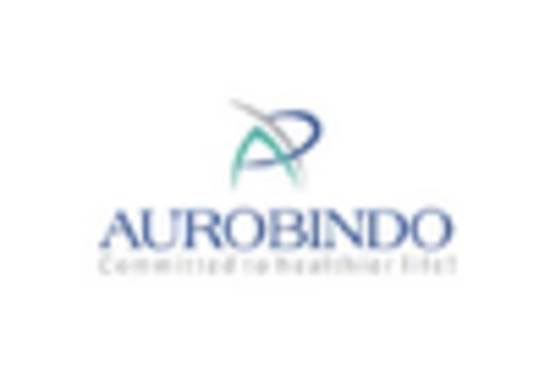


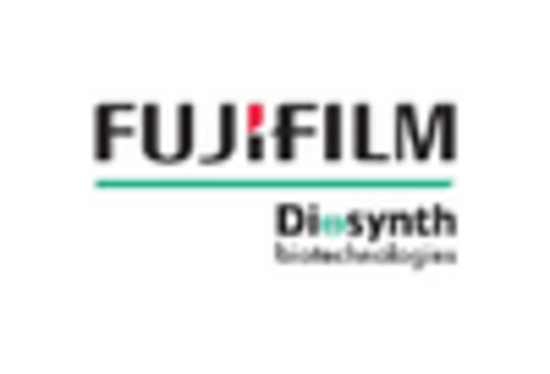
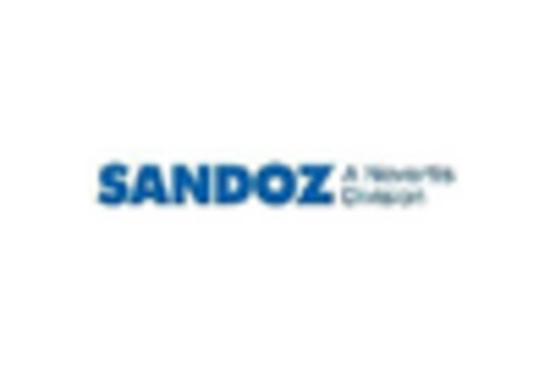
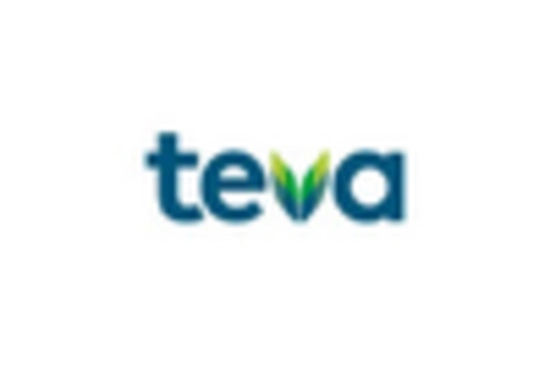

Leave a Comment